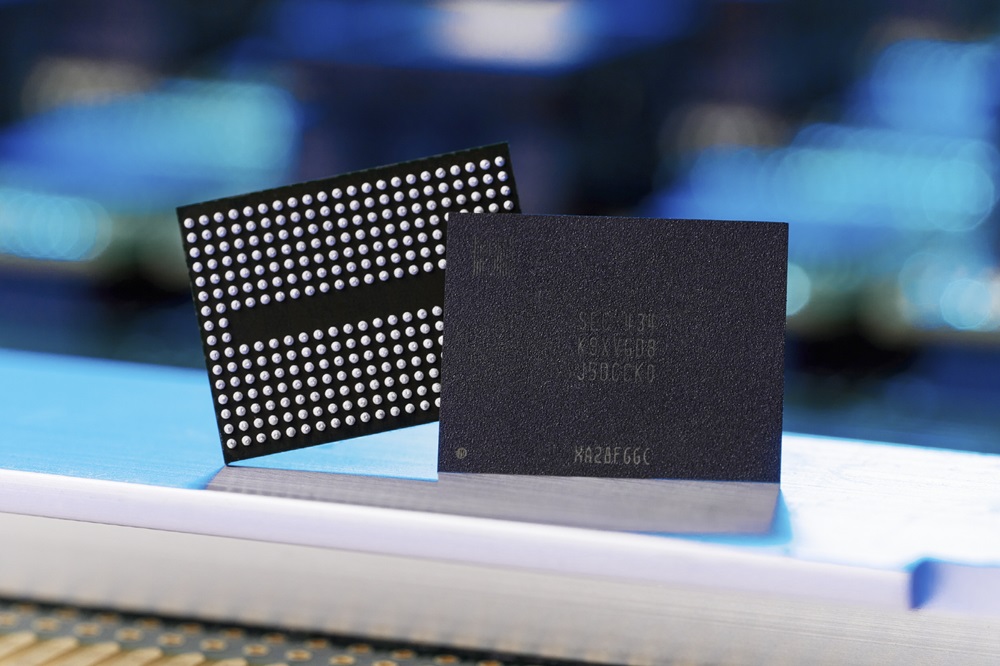
Samsung has introduced the "Industry's First" 24Gb (3GB) GDDR7 memory, offering exceptionally high speeds of up to 42.5 Gbps to power next-generation GPUs. Owing to many refinements and updates, Samsung asserts a 50% density improvement alongside a 30% boost in efficiency versus the previous generation. Validation of these 24Gb GDDR7 modules is ongoing with "major" GPU manufacturers and mass production is planned for early next year.
Last July, Samsung unveiled the world's first GDDR7 memory, rated at a modest 32 Gbps and with capacities of 16Gb (2GB) per module. The new ICs net Samsung a 25% improvement in bandwidth against its already-announced GDDR7 modules, and a 2.36x improvement against its last-generation 18 Gbps GDDR6 offerings. In terms of manufacturing, Samsung's 24Gb GDDR7 memory utilizes the company's 5th generation 10nm node, resulting in a 50% density increase at the same package size.
To achieve these never-before-seen heights, Samsung has incorporated PAM3 signaling which makes use of 3 signals (-1, 0, +1) to transmit data. These new memory modules can easily hit 40 Gbps, though, under specific conditions, 42.5 Gbps is also possible, almost 80% faster than what GDDR6X delivers (24 Gbps).

With great power comes great responsibility and to address the concerns of efficiency, Samsung touts their new GDDR7 memory as 30% more efficient than last-generation thanks to technologies such as clock control management and a dual VDD design. Furthermore, the issue of current leakage is resolved by power gating; shutting down parts of the chip that aren't in use.
All that jargon aside, it is important we address the elephant in the room. Last-generation GDDR6/X memory featured 16Gb (2GB) memory modules. The fact that Samsung's GDDR7 offerings have 1.5x more memory per module should result in higher VRAM capacities for next-generation GPUs. Here is a brief overview of what you can expect if GPU manufacturers employ 42.5 Gbps 24Gb (3GB) modules at different bus widths:
- 128-bit: 12GB of VRAM at 680 GB/s
- 192-bit: 18GB of VRAM at 1,020 GB/s
- 256-bit: 24GB of VRAM at 1,360 GB/s
- 320-bit: 30GB of VRAM at 1,700 GB/s
- 512-bit: 48GB of VRAM at 2,720 GB/s
This should come as great news for gamers, as the last generation of GPUs was held back by a lack of VRAM. Even 1080p nowadays can require more than 8GB of memory, so we hope that GPU manufacturers don't cheap out on the memory capacity next generation. Not to sound like a wet blanket, but don't keep your hopes up since entry-level GPUs next generation might stick with readily available 16Gb GDDR6 modules as they would be cheaper to produce, but that's just speculation.




!["[T]he First and Fifth Amendments Require ICE to Provide Information About the Whereabouts of a Detained Person"](https://images.inkl.com/s3/publisher/cover/212/reason-cover.png?w=600)


